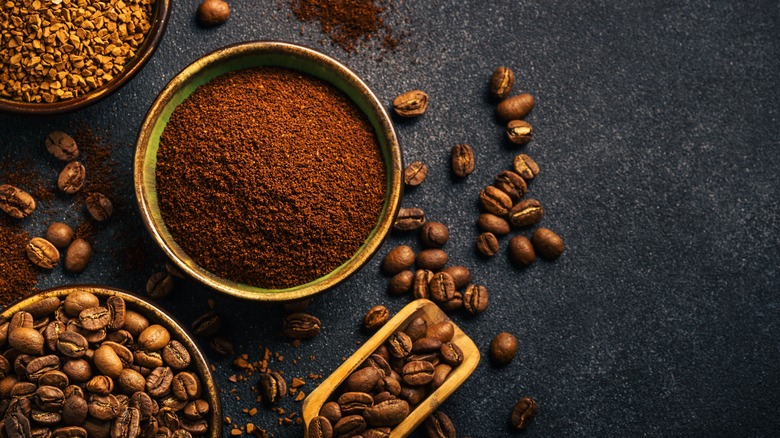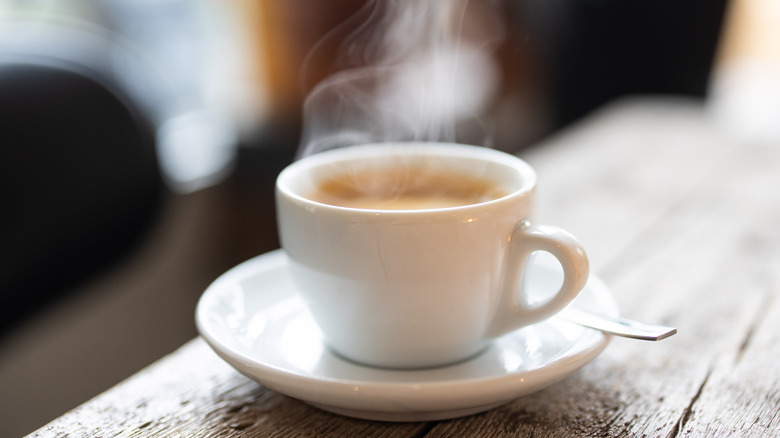How Long You Can Store Ground Coffee Before It Starts To Go Stale
"Life is too short to drink bad coffee." If you're a coffee connoisseur who wakes up every day anticipating that first sip of morning brew, you know there's truth to the saying. You also know all too well the thud of disappointment that occurs when that first sip of the day fails to deliver the expected caffeinated ecstasy, instead landing on your tastebuds like a mouthful of lukewarm dishwater. You did everything right, but the final product is oh so wrong. That's probably because ground coffee has a surprisingly short shelf life. By some accounts, it's past its prime within 30 minutes of leaving the grinder. Knowing the ins and outs of properly storing ground coffee is just as important as correctly caring for a bottle of fine wine.
It's a bit more complicated than storing plain old coffee beans. In fact, the general consensus among coffee producers and consumers-in-the-know is that you should never grind more beans than you expect to use at any given time, and it's better to store beans than ground coffee. That's because ground coffee shows its age faster than coffee beans. It seems extreme, but there's a reasonable explanation. Two things combine to steal freshness from coffee: light and oxygen. That doesn't mean ground coffee is going to make an undrinkable cup of joe, but it does mean the flavor is compromised almost immediately. Here's why. Ground coffee has more surface area, allowing light and air to infiltrate at a faster rate.
How to store ground coffee
We have some good news. Ground coffee will turn out a decent cup of joe for a good two weeks after it leaves the grinder — good enough that the majority of coffee drinkers won't even notice a difference. Plus, there are plenty of things you can do to ensure the grounds perform to their full potential time and time again. First and foremost, storage matters. Remember the pesky light and oxygen that steal freshness from ground coffee? Keeping those elements at bay is a major step toward protecting the quality of your java. Perhaps you've noticed that most ground coffee comes in vacuum-sealed bags. That's great for prolonging its shelf life when it's en route from the coffee manufacturer to the consumer — in fact, an unopened vacuum-packed bag of ground coffee will hold its flavor for up to a year — but, once the seal is broken, the freshness clock speeds up exponentially.
This means your best bet is to transfer the ground coffee to an airtight container. Avoid the temptation to go for a pretty glass coffee canister to display on your counter. Clear glass won't protect your coffee from light. Choose an opaque container or, better yet, go for ceramic or metal. Despite rumors to the contrary, storing coffee — ground or whole bean — in the freezer is never a good idea. For best results, place your airtight container in a cupboard where the temperature range is 50 to 70 degrees Fahrenheit.

